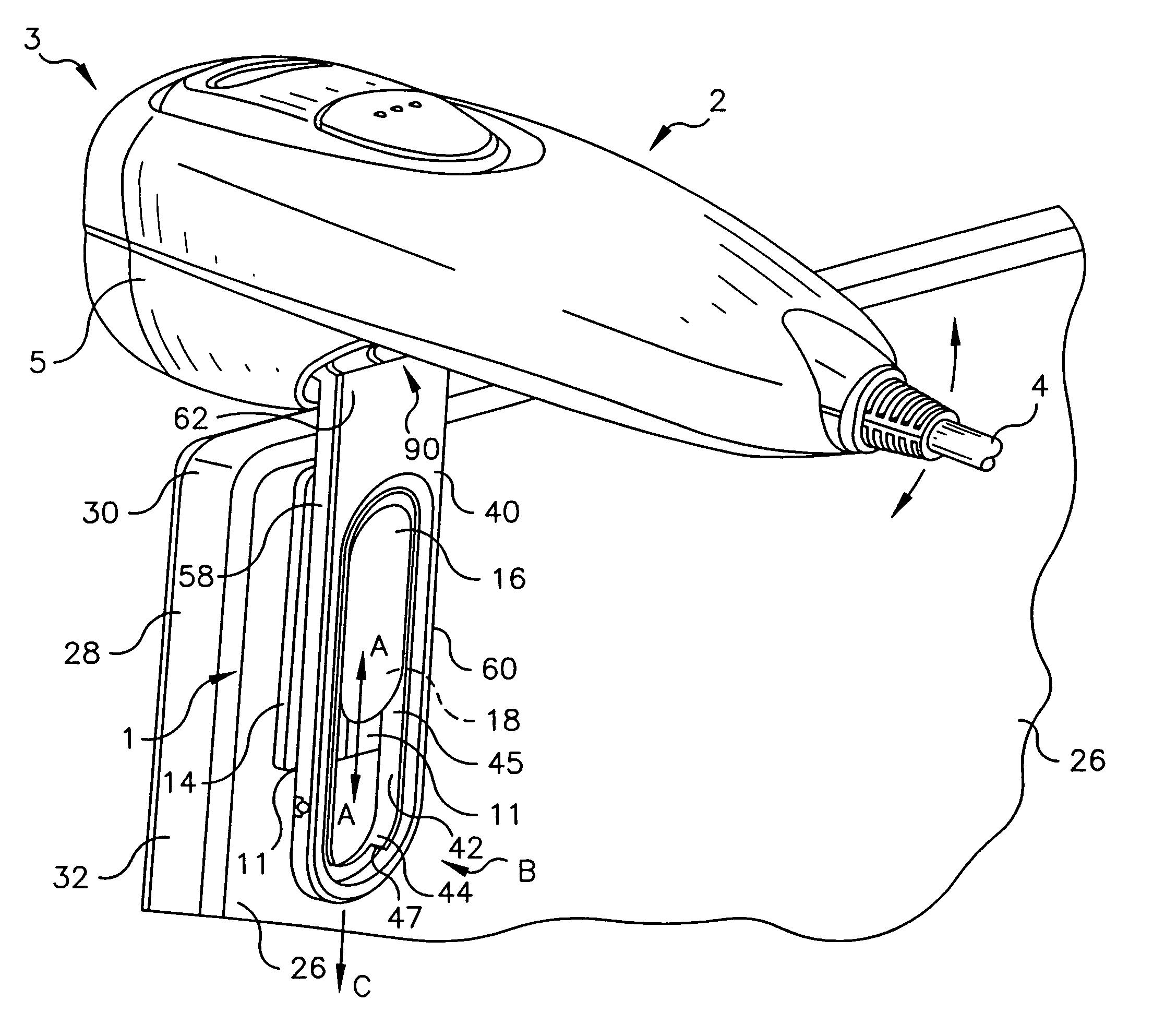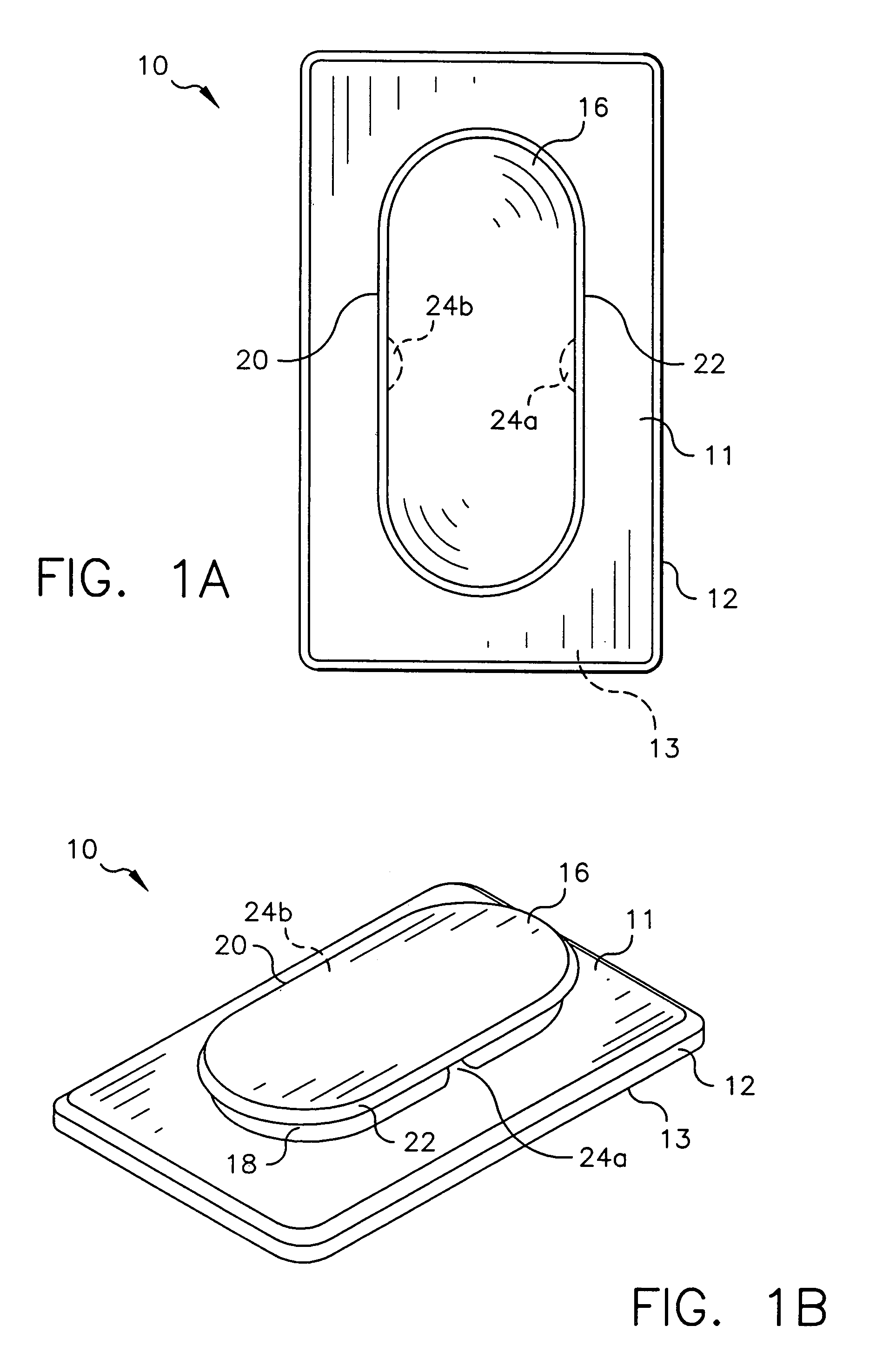Device for mounting a camera on a computer
a computer and camera technology, applied in the field of computer mounting, can solve the problems of limiting the user's working surface, not allowing such cameras, and providing an inferior angle from which to take images, etc., to achieve the effect of convenient use, low cost, and low cos
- Summary
- Abstract
- Description
- Claims
- Application Information
AI Technical Summary
Benefits of technology
Problems solved by technology
Method used
Image
Examples
Embodiment Construction
[0033]The preferred embodiments of the present invention will now be described in detail with reference to FIGS. 1–8.
[0034]The invention is a camera mounting device, referred to generally by reference numeral 1 (see FIG. 4). The device 1 includes a base or badge 10 which can be attached to a laptop screen housing via an adhesive, a holder 40 for the camera 2 that can be mated to the base 10, and a hinge 90 in the holder 40 to allow movement of the camera 2 relative to the laptop screen housing. From the camera 2 there extends a cord or tether 4 which connects to the laptop. The term “laptop” is used herein to mean a portable computing device.
[0035]The base 10 is shown particularly in FIGS. 1A–1D, wherein FIG. 1A is a top plan view, FIG. 1B is a perspective view, FIG. 1C is a front view, and FIG. 1D is a right side view. The base 10 is preferably injection molded from plastic. As can be seen, the base 10 includes support 12 which attaches to a computer via an adhesive member 14 (see,...
PUM
 Login to View More
Login to View More Abstract
Description
Claims
Application Information
 Login to View More
Login to View More - R&D
- Intellectual Property
- Life Sciences
- Materials
- Tech Scout
- Unparalleled Data Quality
- Higher Quality Content
- 60% Fewer Hallucinations
Browse by: Latest US Patents, China's latest patents, Technical Efficacy Thesaurus, Application Domain, Technology Topic, Popular Technical Reports.
© 2025 PatSnap. All rights reserved.Legal|Privacy policy|Modern Slavery Act Transparency Statement|Sitemap|About US| Contact US: help@patsnap.com



